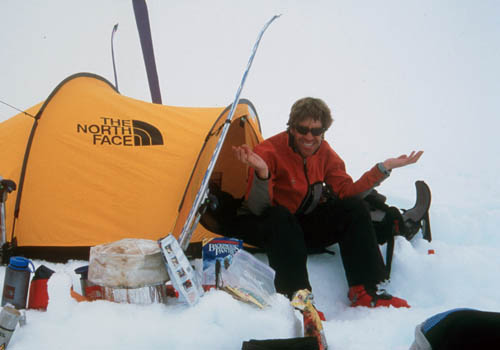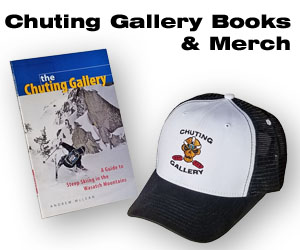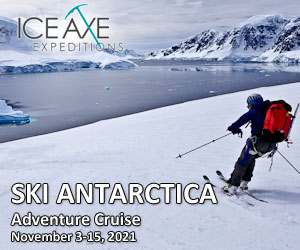Navigation – Intro
“Never take no cutofs and hurry along as fast as you can.”
Virginia Reed, thirteen-year-old survivor of the cannibalistic Donner/Reed party. 1847Getting lost in the mountains is a time honored tradition. Teton climbing guidebook author, Leigh Ortenburger, once said “I’m not publishing any more new routes where people just got lost!” As long as there’s a happy, safe ending, getting lost in the mountains is merely a state of mind. You can’t be lost if you don’t care where you are going.

Going nowhere fast. The leaky tent was trival compared to the lack of a good map and endless white-out conditions. Antarctic Penninsula
But most of the time we do care where we are going. In familiar terrain on a clear day, navigation is as easy as Point & Chute-you see it, then you ski it. In poor weather, unfamiliar terrain or after you have been benighted, the stakes go way up and it becomes Navigation Skills or Hospital Bills. Navigation is an ancient art that is best learned when you least need it, like on a nice clear day instead of in a torrential downpour in the dark.
Navigation for its own sake is fun. The act of planning an outing on a two dimensional surface and then seeing it unfold exactly as intended (hopefully) in reality is magical. An important aspect of learning to navigate is to enjoy it, and in turn, a big part of enjoying it is doing it yourself. Following someone else’s tracks through the mountains will help develop your mountain travel skills, but not your navigation skills.
Getting lost is easy. Staying found is not.
______________________
For 15% off on National Geographic TOPO! Maps from Backcountry.com, click the image below…
Category: 10 Navigation









